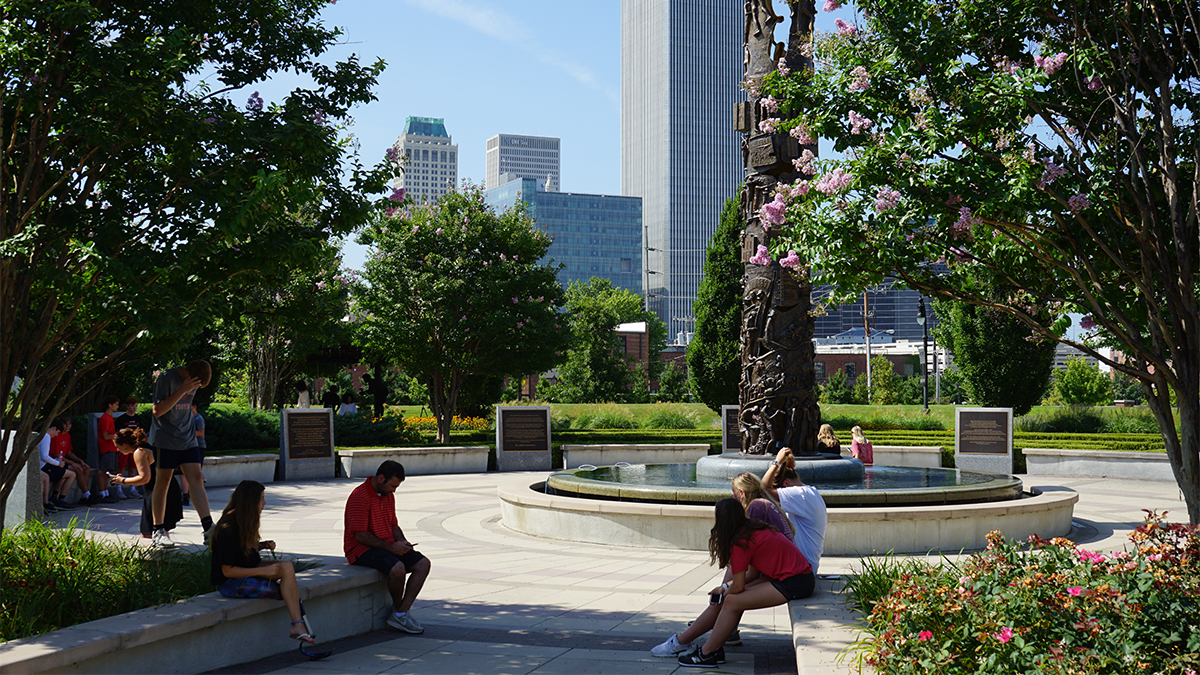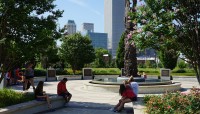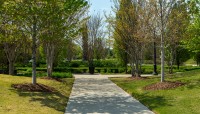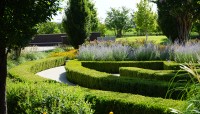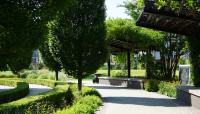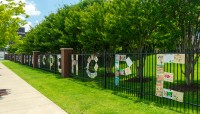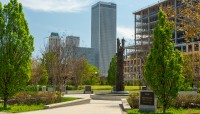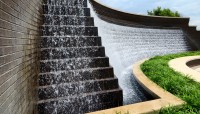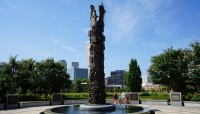Landscape Information
This approximately two-and-a-half-acre rectilinear park, named for historian Dr. John Hope Franklin, is located south of Interstate 244 in the Greenwood neighborhood, a block west of North Greenwood Street – otherwise known as Black Wall Street. The park, completed in 2010, commemorates the 1921 Tulsa Race Massacre, in which hundreds of African Americans were killed and more than a thousand Greenwood residences and businesses destroyed. Designed by R.L. Shears Company, P.C., landscape architects, in conjunction with EWC-1 Architects, Inc., the park is edged by a metal picket fence and features rolling lawns and two circular plazas oriented on axis with one another, each including sculptures by Ed Dwight.
Entering the park from the north, visitors arrive at “Hope Plaza,” which features a central, sixteen-foot-tall granite pedestal and three figurative bronze sculptures. The northeastern side of the plaza is defined by a half-circle brick wall animated by a stepped fountain and edged by a continuous concrete bench that affords views of both plazas. A linear path leads southwest down a gentle slope to the second plaza. The path becomes narrower as it approaches, creating the illusion of a forced perspective.
Located at the approximate center of the park, the larger southern plaza includes a fountain and central 26-foot-tall pillar, called the “Tower of Reconciliation,” embellished with bas-relief details. Framed by backless benches and plaques inscribed with quotes and statements contextualizing the central artwork, the plaza is encircled by a labyrinthine path defined by low deciduous topiaries, beds planted with flowering and columnar deciduous trees, and a concrete sidewalk. This sidewalk, bordered by regularly spaced maple trees, includes benches shaded by awnings draped in vines. A low, turf berm partially rings the sidewalk, creating a sense of enclosure.
Opposite the park’s northeastern entrance, is a linear park designed by Howell & Vancuren, landscape architects that connects the park with the historic Black Wall Street The park is a part of the African American Civil Rights Network.




